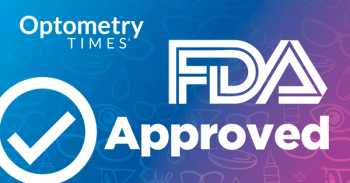
Diabetic retinopathy treatment practical review
When should ODs sends their patient to a retina specialist?
The question of “When should ODs sends their patient to a retina specialist?” is often asked. There are a number of recommendation schemes for examination and follow-up as well as management, including referral guidelines for ODs as well as general ophthalmologists and primary-care providers.
Examples of these include:
•
•
•
Beyond algorithmic care, a number of peripheral factors dictate the patient’s pathway of care. These factors include the provider’s comfort level, experience, and expertise with the disease. Other factors are access to subspecialty facilities, patient insurance coverage and limitations, patient wiliness and compliance to follow-up with the referral, patient consent to receive treatment, and patient adherence to follow-up care.
Diabetic retinopathy treatment is not always as clear-cut as charts and algorithm recommendations and protocols.
Keep in mind that many malpractice cases are poor outcomes not from receiving an improper treatment regimen but due to delayed and misdiagnosis. Therefore, to determine the time for referral and course of management, ODs should first properly detect and stage the disease.
When to intervene
Complications of diabetic retinopathy that require ocular intervention are in a few categories. Since the 1980-90s mainly by publications of Early Treatment Diabetic Retinopathy (ETDRS),1 Diabetic Retinopathy Study (DRS),2 and Diabetic Vitrectomy Study (DRVS)3 became evident that photocoagulation was an effective treatment in focal form (focal or grid) for diabetic macular edema (Figures 1A and 2) or, based on the ETDRS terminology, clinically significant macular edema a categorization that is no longer applicable. It is effective in the panretinal form for irradiating retinal neovascularization (Figure 3) in the proliferative stage of diabetic retinopathy. Vitrectomy in presence of vitreous hemorrhage with or without tractional retinal detachment can help as well.
In past decade and half, the utilization of anti-vascular endothelial growth factor (VEGF) agents in the form of intravitreal injection, which is highly effective against the same complications, have been added to the armament of diabetic eye care (Figures 1B, 2, 3, 4). Anti-VEGF has been utilized as either a monotherapy or combination with laser and/or vitrectomy when needed in both trials and clinically (Figure 4).
A crucial factor determining the visual outcome of these treatment strategies, is the timely diagnosis of vision-threatening macular edema, presence of retinal and iris neovascularization particularly before escalation of the disease, and evolving vitreous hemorrhage, tractional retinal detachment, and neovascular glaucoma. Therefore, providers should vigilantly look for macular edema by careful examination and use of optical coherence tomography (OCT), which is highly effective in diagnosing macular disease. Retinal neovascularization can be found with careful dilated fundus examination, widefield and ultra-widefield photography, fluorescein angiography, and OCT angiography when available.
Treatment
A recent paradigm shift in treating diabetic retinopathy is the use of anti-VEGF in moderately severe and severe nonproliferative diabetic retinopathy to regress the disease to the earlier stages. In the RISE and RID clinical trials while evaluating the efficacy of ranibizumab (Lucentis, Genentech) for diabetic macular edema, it was noted that patients in the treated arm had a 2- to 3-step improvement in their level of nonproliferative diabetic retinopathy as determined by the ETDRS diabetic retinopathy classification and less likely to develop proliferative DR.4 This improvement was statistically significant as compared to the sham group.
In other words, patients with the ETDRS diabetic retinopathy severity scale of 47 and 53 (moderately severe and severe nonproliferative diabetic retinopathy) improved to level 35 (mild nonproliferative diabetic retinopathy).5,6 It is worth nothing the patients with levels 43 and 47 begin to demonstrate vision loss, and levels 47 have 66 percent and 53 an 80 percent chance of conversion to proliferative diabetic retinopathy in 5 years.5,7
These and other clinical trials such as PANORAMA, which evaluated the effect of intravitreal aflibercept (Eylea, Regeneron) for treatment of severe nonproliferative diabetic retinopathy, lead to the U.S. Food and Drug Administration approval of the two agents (ranibizumab and aflibercept) for treatment of diabetic retinopathy even in the absence of macular edema (Figures 5 and 6).8
Wrap up
In summary, it is imperative to refer patients with diabetic macular edema and presence or suspicion of retinal and/or iris neovascularization. It is highly recommended to refer patient with advancing disease from mild to moderate retinopathy.
Patients with diabetic retinopathy should always be educated about the possibility of vision loss and even blindness. Patient education also needs to include the symptoms for which patients need to seek immediate care and be made aware that lack of visual and ocular symptoms and even at time
Diabetic retinopathy is one of the most common causes of blindness in the U.S. and the world. With better detection, timely referral and adherence to treatment of this chronic disease many can be saved from having to live with diabetic related impaired vision.
References
1. Early Treatment Diabetic Retinopathy Study research group. Photocoagulation for diabetic macular edema. Early Treatment Diabetic Retinopathy Study report number 1. Arch Ophthalmol. 1985 Dec;103(12):1796-806.
2. Diabetic Retinopathy Study Research Group. Preliminary report on effects of photocoagulation therapy. Am J Ophthalmol. 1976;81:383-96.
3. Two-year course of visual acuity in severe proliferative diabetic retinopathy with conventional management. Diabetic Retinopathy Vitrectomy Study (DRVS) report #1. Ophthalmology. 1985 Apr;92(4):492-502.
4. Brown DM, Nguyen QD, Boyer DS, Marcus DD, Boyer DS, Patel S, Feiner L, Schlottmann PG, Chen Rundle A, Zhang J, Rubio RG, Adamis AP, Ehrlich JS, Hopkins JJ, RIDE and RISE Research Group. Long-term outcomes of ranibizumab therapy for diabetic macular edema: the 36-month results from two phase III Trials (Rise and Ride). Ophthalmology. 2013 Oct;120(10):2013-22.
5. Early Treatment Diabetic Retinopathy Study Research Group. Fundus photographic risk factors for progression of diabetic retinopathy: ETDRS Report Number 12. Ophthalmology. 1991 May;98(5 Suppl):823-33.
6. Ip MS, Domalpally A, Hopkins JJ, Wong P, Ehrlich JS. Long-term effect of ranibizumab on diabetic retinopathy severity and progression. Arch Ophthalmol. 2012 Sep;130(9):1145-1152.
7. Mazhar K, Varma R, Choudhury F, McKean-Cowdin R, Azen S. Severity of diabetic retinopathy and health-related quality of life: The Los Angeles Latino Eye Study. Ophthalmology. 2011 Apr;118(4):649-655.
8. Wykoff CC. Intravitreal Aflibercept for Moderately Severe to Severe Non-Proliferative Diabetic Retinopathy (NPDR): 2-Year Outcomes of the Phase 3 PANORAMA Study. Data presented at: Angiogenesis, Exudation and Degeneration Annual Meeting; February 8, 2020; Miami, FL.
Newsletter
Want more insights like this? Subscribe to Optometry Times and get clinical pearls and practice tips delivered straight to your inbox.









































